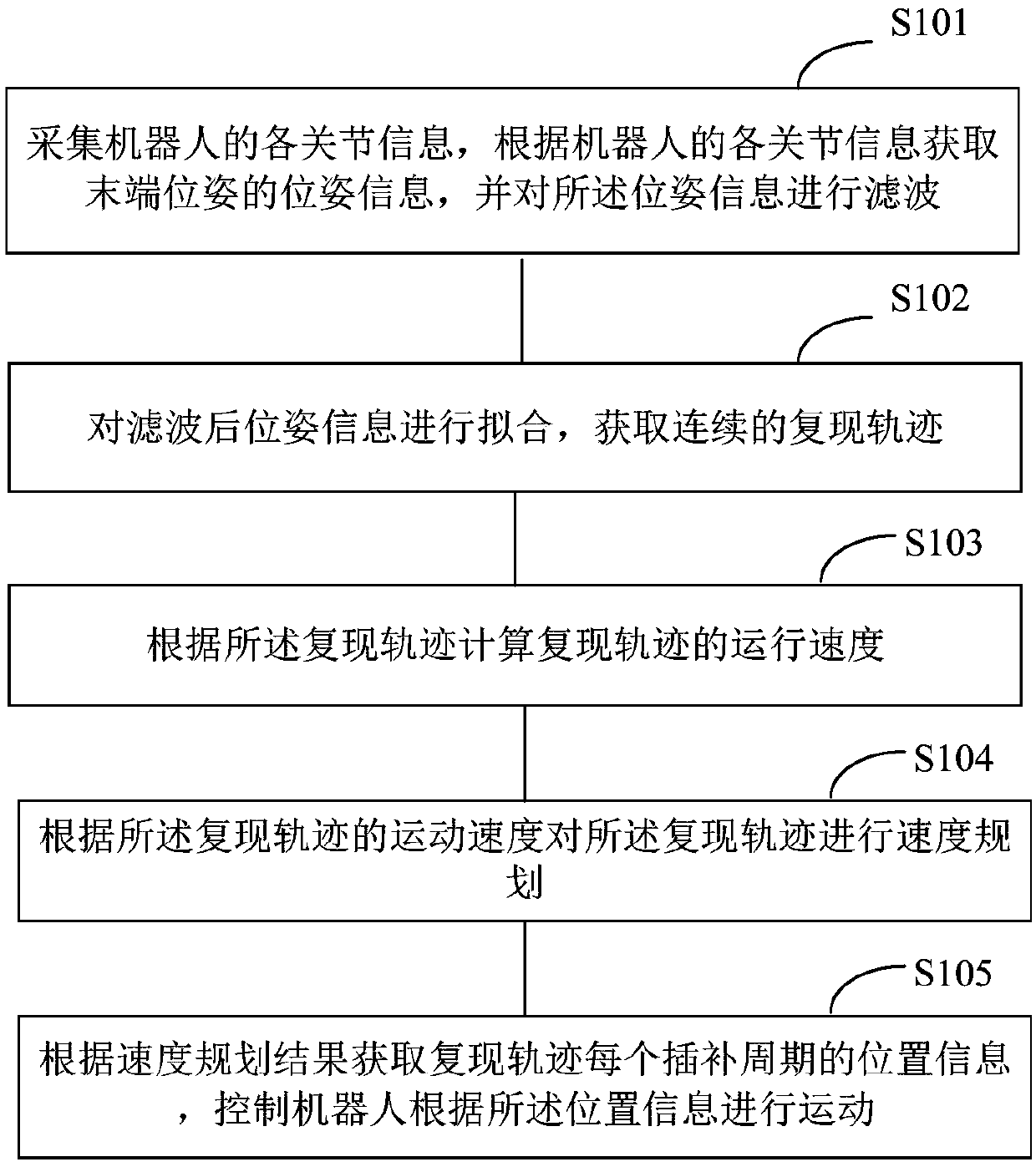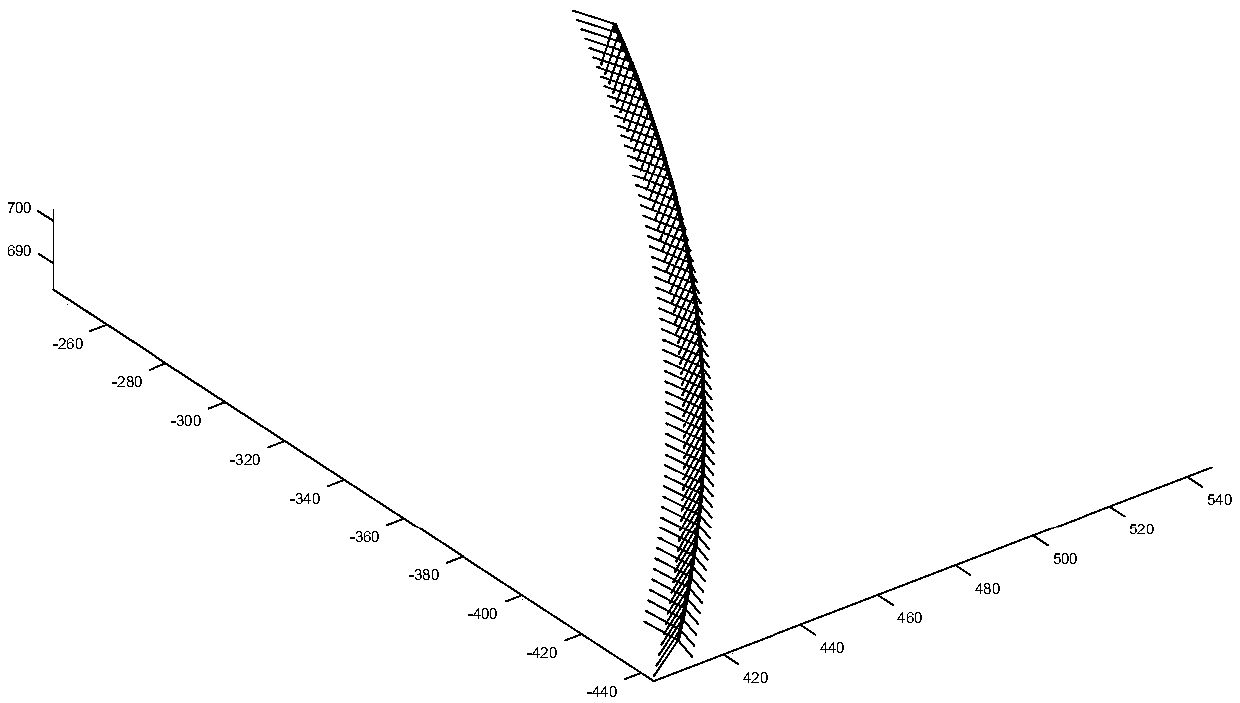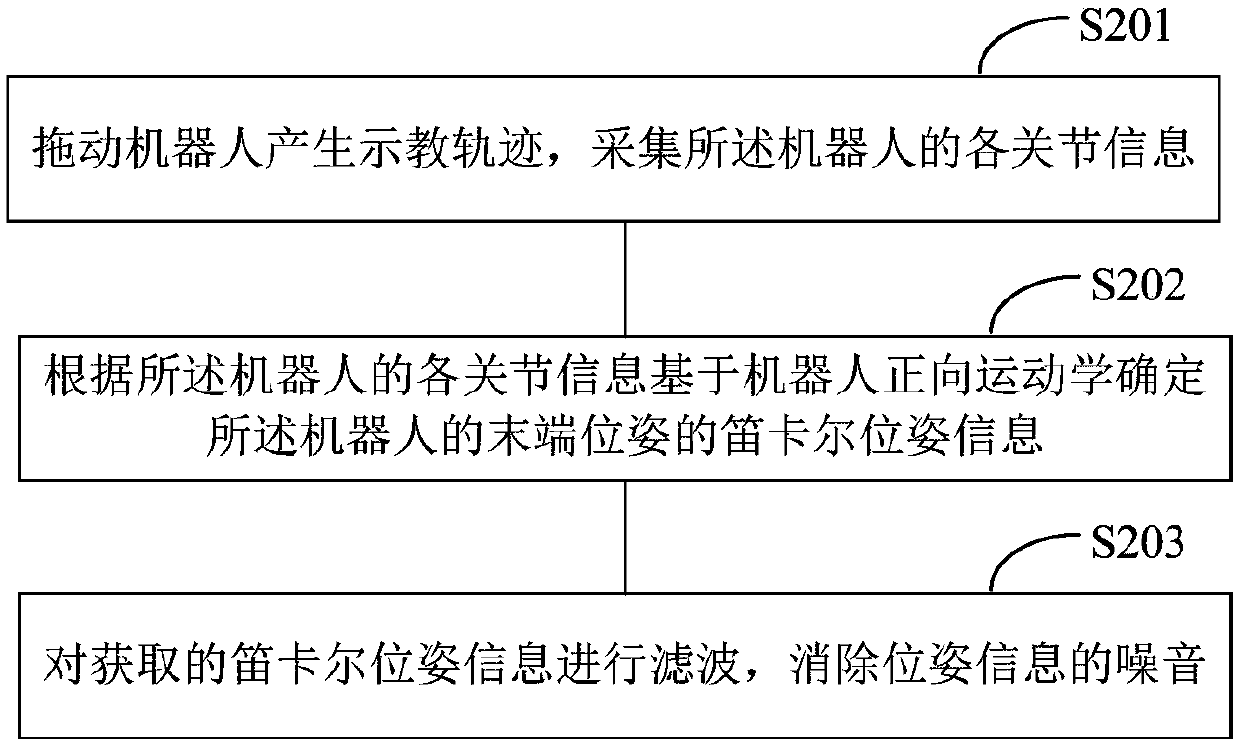Industrial robot demonstration track recurrence method and system and robot
An industrial robot and robot technology, applied in the field of robotics, can solve problems such as large end pose error, discontinuous pose curve, uncontrollable change in pose speed, etc., to achieve the effect of reducing errors
- Summary
- Abstract
- Description
- Claims
- Application Information
AI Technical Summary
Problems solved by technology
Method used
Image
Examples
Embodiment 1
[0045] like figure 1 As shown, this embodiment provides a method for reproducing the teaching trajectory of an industrial robot, which specifically includes:
[0046] Step S101 : collect the information of each joint of the robot, obtain the pose information of the terminal pose according to the information of each joint of the robot, and filter the pose information.
[0047] In a specific application, drag the robot to generate a teaching trajectory, collect the information of each joint of the robot, and obtain the Cartesian pose information of the end through the positive solution of the robot kinematics. Filter the acquired pose information to eliminate the noise of the pose information. Pose information includes position information and attitude information. It should be noted that obtaining the Cartesian pose information of the terminal through the forward solution of robot kinematics is an existing technology in the field, and how to realize it will not be repeated he...
Embodiment 2
[0060] like image 3 As shown, in this embodiment, step S101 in Embodiment 1 specifically includes:
[0061] Step S201: Drag the robot to generate a teaching trajectory, and collect information about each joint of the robot.
[0062] In a specific application, by dragging the robot, the robot generates a teaching trajectory and collects joint information of each joint of the robot. The information of each joint of the robot can be collected through sensors at each joint of the robot. It is also possible to collect the joint information of the robot through the encoder installed on the joint or motor end of the robot, without limitation.
[0063] Step S202: Determine the Cartesian pose information of the end pose of the robot based on the forward kinematics of the robot according to the joint information of the robot.
[0064] It should be noted that the determination method of the Cartesian pose information of the end pose of the robot based on the robot's forward kinematic...
Embodiment 3
[0068] like Figure 4 As shown, in this embodiment, step S102 in Embodiment 1 specifically includes:
[0069] Step S301: Fitting the collected pose information with a Nurbs curve to obtain a continuous recurring trajectory; the pose information includes position information and attitude information.
[0070] In specific applications, for the collected location information A Nurbs curve is used for fitting to obtain a continuous position curve, and the continuous position curve is: Among them, d i control vertex for the position curve, w i is the weight factor, is the p-th B-spline basis function;
[0071] In specific applications, for the collected attitude information Adopt Nurbs curve to fit, obtain continuous posture curve, described continuous posture curve is: in, Control vertices for attitude Nurbs curves, w i is the weight factor, is the p-th B-spline basis function.
[0072] In specific applications, the use of B-spline curve fitting can ensure the cu...
PUM
 Login to View More
Login to View More Abstract
Description
Claims
Application Information
 Login to View More
Login to View More - R&D
- Intellectual Property
- Life Sciences
- Materials
- Tech Scout
- Unparalleled Data Quality
- Higher Quality Content
- 60% Fewer Hallucinations
Browse by: Latest US Patents, China's latest patents, Technical Efficacy Thesaurus, Application Domain, Technology Topic, Popular Technical Reports.
© 2025 PatSnap. All rights reserved.Legal|Privacy policy|Modern Slavery Act Transparency Statement|Sitemap|About US| Contact US: help@patsnap.com



